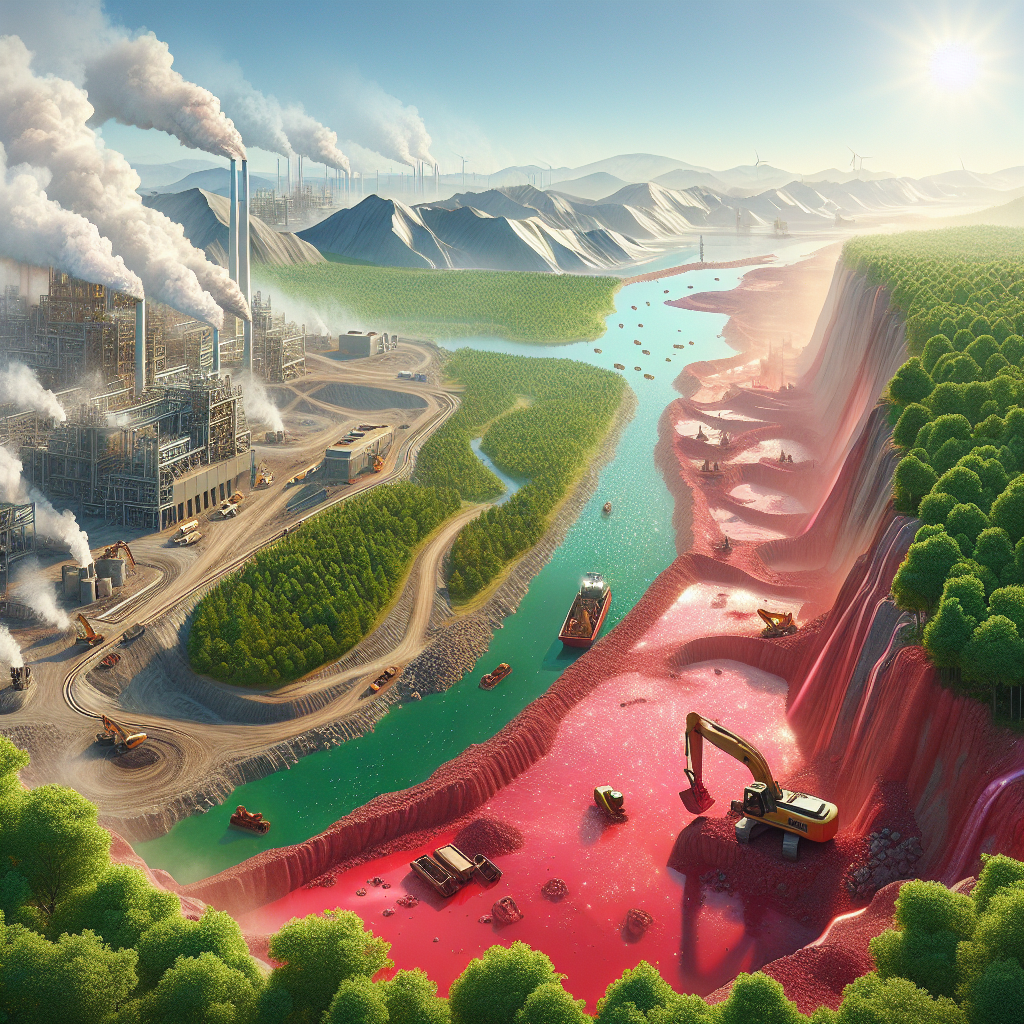The Environmental Impacts of Lithium Mining for Battery Production
The quest for cleaner energy sources has led to an increased demand for lithium, often dubbed “white gold,” due to its pivotal role in manufacturing batteries, especially for electric vehicles (EVs) and renewable energy storage systems. While the shift towards battery-powered solutions is a significant step away from fossil fuels, the environmental implications of lithium mining necessary for this transition have drawn considerable attention and concern. This article explores the environmental impacts of lithium mining for battery production and addresses frequently asked questions on the subject.
The Lithium Mining Process
Lithium is primarily extracted through two methods: traditional open-pit mining and the evaporation of lithium-rich brine water. Open-pit mining involves removing layers of soil and rock to access lithium deposits, while brine extraction involves pumping lithium-rich brine to the surface, where it is left to evaporate, leaving behind lithium and other minerals.
Environmental Impacts
Water Consumption and Contamination
One of the most significant environmental impacts of lithium mining is the extensive use of water, particularly in the brine extraction method. This process can consume millions of gallons of water, leading to water scarcity in already arid regions, such as parts of Chile, Argentina, and Bolivia, which sit atop the world’s largest reserves of lithium. Besides, the chemical process of extracting lithium from the brine can lead to contamination of local water supplies with toxic chemicals, affecting both ecosystems and communities reliant on these water sources.
Habitat Destruction
Open-pit mining for lithium, similar to other types of mining, leads to significant disruption of local ecosystems. The removal of vegetation and soil, alteration of landforms, and the creation of waste materials can destroy habitats for many species, leading to loss of biodiversity. The impact is not limited to terrestrial ecosystems; the use of toxic chemicals in the extraction process can also affect aquatic life if these chemicals are not properly managed and contained.
Air Pollution
Dust and fine particulate matter released during lithium mining can contribute to air pollution, affecting the respiratory health of workers and nearby populations. Moreover, the transportation of lithium and its intermediate products contributes to carbon emissions, somewhat countering the benefits of transitioning to clean energy sources.
Soil Contamination
The chemical spills and leaks associated with lithium extraction can lead to soil contamination, affecting soil quality and agricultural productivity in surrounding areas. Such contamination can also have long-term ecological impacts, affecting plant and animal life and potentially entering the human food chain.
Social and Economic Impacts
Lithium mining can have profound social and economic impacts on local communities. While it can create jobs and stimulate economic activity, it can also lead to displacement of communities, loss of livelihoods for those dependent on natural resources, and conflicts over land and water use. The influx of workers to mining areas can strain local infrastructure and services and lead to social tensions.
Mitigating the Environmental Impact
The environmental challenges posed by lithium mining necessitate the adoption of more sustainable practices. These include improving the efficiency of water use in lithium extraction, developing technologies that minimize the ecological footprint of mining operations, and implementing strict environmental regulations to ensure that mining companies adhere to best practices in environmental management. Recycling lithium from used batteries is also a critical avenue to reduce the demand for primary lithium mining and mitigate its environmental impact.
FAQs
Q: Why is lithium important for battery production?
A: Lithium is a key component in rechargeable lithium-ion batteries due to its high electrochemical potential, which allows for higher energy density compared to other battery technologies. This makes it ideal for use in electric vehicles and portable electronics.
Q: Can lithium be recycled?
A: Yes, lithium can be recycled from used batteries. While the technology and infrastructure for lithium recycling are still developing, advancements in this area could significantly reduce the environmental impact of lithium mining.
Q: Are there alternatives to lithium for batteries?
A: Researchers are exploring alternatives to lithium, such as sodium, magnesium, and solid-state batteries. However, these technologies are still in the developmental stages and are not yet commercially viable on a large scale.
Q: How can consumers contribute to reducing the environmental impact of lithium mining?
A: Consumers can contribute by supporting the recycling of electronic devices and electric vehicles, choosing products with longer lifespans, and supporting policies and companies that prioritize sustainable practices in lithium mining and battery production.
Q: Is the environmental impact of lithium mining worse than the impacts of fossil fuel extraction?
A: While lithium mining has significant environmental impacts, it is generally considered to have a lower overall environmental footprint compared to fossil fuel extraction, especially when considering the lifecycle emissions and pollution associated with fossil fuels. However, the goal should be to minimize the environmental impacts of all energy sources as much as possible.
Conclusion
The transition to a low-carbon economy necessitates a significant increase in lithium production to meet the growing demand for batteries. While lithium batteries offer a promising solution to reduce reliance on fossil fuels, the environmental impacts of lithium mining present a complex challenge. Addressing these impacts requires a multifaceted approach, including technological innovation, strict environmental regulations, and the development of sustainable lithium mining practices. As the demand for lithium continues to grow, it is imperative that the environmental costs are minimized to ensure that the transition to cleaner energy sources does not come at the expense of our planet’s ecological health.

